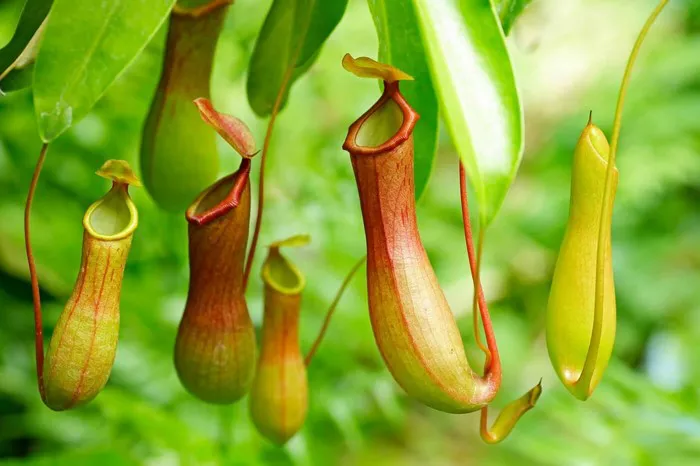Pitcher plants are fascinating carnivorous plants that attract and trap insects to supplement their nutrient intake. Unlike most plants, these unique species have specialized structures, called “pitchers,” that serve as both leaves and traps. If you’re considering growing pitcher plants, understanding their soil requirements is essential for their health and survival.
The Unique Soil Needs of Pitcher Plants
Pitcher plants, including species like Sarracenia (North American pitcher plant) and Nepenthes (tropical pitcher plant), thrive in very specific soil conditions. These plants have adapted to environments where the soil is poor in nutrients and acidic, which is quite different from many other garden plants. The soil you use must mimic these conditions to ensure that your pitcher plants grow strong and healthy.
Why Do Pitcher Plants Require Special Soil?
Pitcher plants are native to bogs and wetlands, where the soil is often waterlogged and lacks essential nutrients like nitrogen and phosphorus. This lack of nutrients is important because pitcher plants get their nutrients primarily from insects they trap in their pitcher-shaped leaves. The soil needs to be nutrient-poor to prevent root burn and overfeeding of the plant. Additionally, the soil should have good drainage to mimic the well-drained yet moist conditions of their natural habitats.
Ideal Soil Composition for Pitcher Plants
To create the ideal environment for your pitcher plants, you’ll need to use a soil mix that is acidic, low in nutrients, and well-draining. Here’s a breakdown of the soil components that work best:
Sphagnum Moss
Sphagnum moss is a key component in pitcher plant soil mixes. It is naturally acidic and retains moisture without becoming waterlogged. This moss helps maintain the required moisture level in the soil, ensuring the roots don’t dry out. You can use sphagnum moss alone or mix it with other materials for added drainage.
Perlite
Perlite is a lightweight volcanic material that is excellent for improving drainage. It helps prevent the soil from becoming too dense and waterlogged. Mixing perlite with sphagnum moss creates a balance of moisture retention and drainage that pitcher plants need.
Silica Sand
Silica sand is another excellent addition to the soil mix. Unlike regular sand, which can contain salts and minerals that harm the plants, silica sand is pure and won’t damage the delicate root systems of pitcher plants. It helps improve aeration and drainage, making the soil less compact.
Pine Bark or Orchid Bark
Some growers add pine bark or orchid bark to pitcher plant soil mixes for extra aeration and to help retain moisture. However, this is optional, as too much organic matter can introduce nutrients that pitcher plants don’t need.
The Importance of pH Level
Pitcher plants thrive in acidic soils with a pH level between 4.5 and 5.5. This acidic environment is important because it prevents the growth of harmful bacteria and fungus while promoting the ideal conditions for the plant’s roots. Using soil with a high pH (alkaline soil) will prevent pitcher plants from growing and could cause them to die.
Watering Considerations for Pitcher Plants
Along with proper soil, pitcher plants require specific watering conditions. Use distilled or rainwater to keep the soil moist but not soggy. Tap water is not recommended because it often contains minerals and chemicals that can harm pitcher plants. Keep the soil consistently moist, especially during the growing season, but make sure it doesn’t sit in standing water for too long.
How to Maintain Pitcher Plant Soil
Maintaining the right soil conditions is key to the long-term success of your pitcher plants. Over time, sphagnum moss can decompose and lose its structure. When this happens, you may need to refresh the soil mix by replacing or adding more moss, perlite, or sand. Also, avoid fertilizing pitcher plants, as they get their nutrients from insects, and too much fertilizer can cause root damage.
Best Soil Mix for Pitcher Plants
An excellent soil mix for pitcher plants combines equal parts of sphagnum moss, perlite, and silica sand. You can adjust the ratio depending on your specific conditions and plant needs, but this basic mix will provide the perfect balance of acidity, moisture retention, and drainage. Here’s a simple recipe:
- 50% sphagnum moss
- 25% perlite
- 25% silica sand
This mixture is well-suited for most types of pitcher plants and will help them grow in their ideal conditions.
Common Mistakes to Avoid
When growing pitcher plants, there are a few common mistakes that can negatively affect their growth:
Using nutrient-rich soil: Pitcher plants do not thrive in soils rich in nutrients like those used for typical garden plants.
Using tap water: Tap water contains minerals and salts that can harm pitcher plants. Always use distilled or rainwater.
Overwatering or underwatering: It’s important to keep the soil consistently moist but not waterlogged. Check the moisture levels regularly.
Conclusion
In conclusion, pitcher plants have unique soil needs that require careful attention. They thrive in nutrient-poor, acidic, well-draining soils that mimic the boggy conditions of their natural habitats. Using a mix of sphagnum moss, perlite, and silica sand will create the perfect environment for your plants. By providing them with the right soil, proper watering, and the right care, your pitcher plants will flourish and continue to captivate with their unique insect-trapping leaves.


